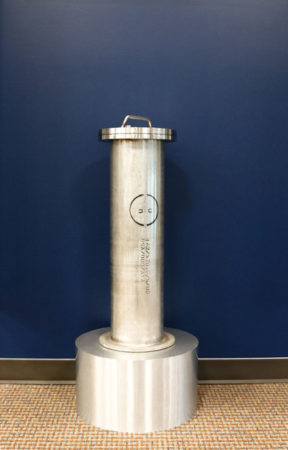After suspect recovered chemical warfare materiel (RCWM) is discovered, the Recovered Chemical Materiel
Directorate (RCMD) deploys equipment to determine if the items are explosively configured and contain a liquid fill. The recovered item is overpacked in a multiple round container (MRC). This allows for safe assessment, storage and transport.
MRCs were specifically designed, tested and fielded for the transport of chemical warfare materiel and are the only containers approved by the Department of Transportation for this purpose. MRCs exceed international packaging requirements. Each MRC contains one munition, but there are multiple sizes in the MRC family to accommodate a variety of munitions.
Considered “overpack” containers, MRCs are designed to prevent any accidental exposure to the environment
in the unlikely event the overpacked items were to leak. Fragile items, such as chemical agent identification sets (CAIS) – glass bottles containing small amounts of chemical agent once used to train Soldiers in the identification and decontamination of chemical agent – may also be transported in MRCs.

